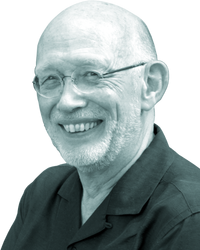
Over het archief
In 2012 verloren we Jean Jacques Peters, voormalig ingenieur van het Waterbouwkundig Laboratorium (1964 tot 1979) en internationaal expert in sedimenttransport, rivierhydraulica en -morfologie. Als eerbetoon aan hem hebben we potamology (http://www.potamology.com/) gecreëerd, een virtueel gedenkarchief dat als doel heeft om zijn manier van denken en morfologische aanpak van rivierproblemen in de wereld in stand te houden en te verspreiden.
Het merendeel van z’n werk hebben we toegankelijk gemaakt via onderstaande zoekinterface.
| [ meld een fout in dit record ] | mandje (0): toevoegen | toon |
 |
| Morphodynamic modelling of the Scheldt mouth: effects of waves Nnafie, A.; van Oyen, T.; De Maerschalck, B.; Plancke, Y.; Mostaert, F. (2017). Morphodynamic modelling of the Scheldt mouth: effects of waves. Version 3.0. FHR reports, 14_094_6. Flanders Hydraulics Research: Antwerp. VII, 34 pp.
Deel van: FHR reports. Flanders Hydraulics Research: Antwerp
|
| Beschikbaar in | Auteurs |
| |
| Documenttype: Projectrapport | |
| Trefwoorden |
Hydraulics and sediment > Hydrodynamics > Current velocities and patterns Hydraulics and sediment > Hydrodynamics > Tides Hydraulics and sediment > Hydrodynamics > Turbulence Hydraulics and sediment > Hydrodynamics > Water levels Numerical modelling ANE, Schelde-estuarium [Marine Regions] Zoet water |
| Author keywords |
|
| Project | Top | Auteurs |
|
Contactgegevens
Opdrachtgever: Vlaams-Nederlandse Scheldecommissie (VNSC)
| Auteurs | Top | |
|
|
| Abstract |
The methodology employed is that, first, the model parameters (coupling time, morphological amplification factor) are optimized to reduce the simulation time as much as possible. Next, runs are conducted with and without waves, starting from an initially flat bed until a bottom pattern is obtained that is characterized by relatively small bed level changes compared with the initial changes (nearly morphodynamic equilibrium). In the experiments with waves, a highly simplified wave forcing (with dominant directions south- and northwest) as a well as a more sophisicated forcing (with four different wave conditions) are considered, using the mormerge approach. Result reveal that when accounting for waves, an ebb-tidal delta forms in the mouth area, which is flanked by two distinct southern and northern channels (”Wielingen” and ”Oostgat”), which are large-scale features that are comparable to observed bathymetry in the Scheldt mouth. The fact that the model simulates two distinct channels (”Oostgat” and ”Wielingen”) in all cases without and with waves, means that tidal motion is the primary forcing that causes the formation of these channels. Furthermore, results from sensitivity experiments to different wave conditions show that in the case that waves are coming from the northwest, the obtained bedlevel does not fundamentally differ from the simulated bedlevel in case of southwesterly waves. In the case of applying four different wave conditions, however, the southern channel (”Wielingen”) is less pronounced than that in the other cases using constant wave conditions. Model results suggest that the observed deepening of Oostgat is part of the natural solution of the system. A major problem in the model is that it simulates too deep channels compared with observations. Nevertheless, by means of an example case, it is shown that the model can be applied to study long-term morphodynamic effects of the presence of a new shipping channel in this area, under the condition that the depth of this channel should be rescaled in proportion to depths of other channels. Finally, due to the idealized approach applied in this model, the precise numbers obtained from the simulations should be considered as indications of orders of magnitudes. |
| Top | Auteurs |

